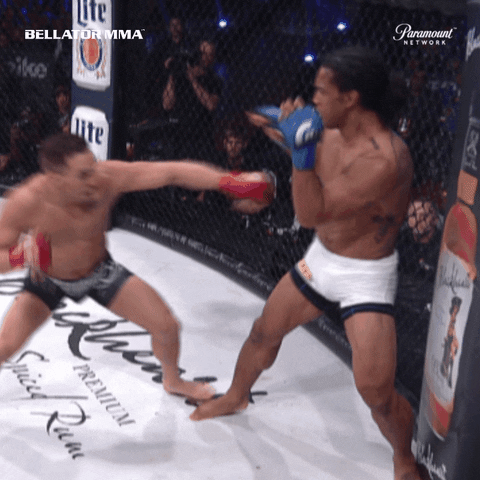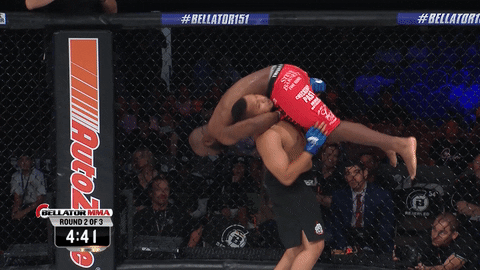How to Strength Train For MMA
Strength training for mixed martial arts is one of the more challenging tasks that a strength and conditioning coach can take on. There are so many different parts. I have been fortunate enough to work with Carmelo Marrero in my past. He has had some big wins in UFC and Bellator. I was able to do a lot of his strength work early on in my career. It was very challenging.

When I took a step back, and almost got out of the fight game, where I really just started to focus on power-based sports like football, volleyball, weightlifting, and wrestling, I realized I love mixed martial arts and would love to train athletes. I started to think of all the factors that go into the sport of mixed martial arts. My brain just started to fill up.

Let’s begin by understanding that the sport of mixed martial arts is extremely technical. The striking, submission, grappling, wrestling, and boxing are all technical. Not only is the execution of movements is technical, but athletes have to be technical while being hit and taking on a physical beating. The challenge becomes staying focused and executing from a technical mindset.
Strength and conditioning coaches need to recognize the main focus with mixed martial arts is focusing on technical prowess. Knowing that, let’s hone in on the strength training elements that athletes can use to improve their performance inside the cage.
1. Mobility
Athletes need to have mobility in their ankles. They need to have mobility in their hips as well. If we look at the best wrestlers, Muay Thai fighters, BJJ grapplers, and boxers in the world, we can learn a lot. MMA fighters need to pull from all disciplines.
Thinking about mobility, we have to be mobile in all our joints. Mobility is defined as passive flexibility with stability in full ranges of motion. So, athletes who have incredible passive flexibility but are not stable are flexible but not mobile. We need the hips, ankles, elbows, and shoulder mobile through deep ranges. This allows athletes to avoid being submitted but also helps athletes have joint integrity to handle the training, throw punches, and move rapidly from side to side or back to front.
2. Dynamic Trunk Control
I believe a lot of the best MMA strength coaches forget to train dynamic trunk control. The best guys in the game, like Phil Daru, get the use of dynamic trunk control.

Take for example an athlete who wants to move their head but keep their trunk controlled. Because of trunk control, the athlete can move the opponent with their head. As the feet move around, the trunk control in the abs and back allows the athlete to take force better and deliver force. Dynamic trunk control allows for more rapid movement in multiple directions.
Watching athletes when they are fatigued and how they lose dynamic trunk control makes them appear to be all over the place. Dynamic trunk control also helps with supporting the neck. Just remember, train dynamic trunk control effectively to keep the power output large and the ability to absorb hits with grit.
3. Power & Coordination
Power and coordination are essentially a mixture of all these different moving pieces. Power is encompassed by strength and speed. Training athletes, if they have great absolute strength, they feel extremely heavy to their opponent. If that is the case, they might need to train their speed more. Now if we have an athlete who is really fast but lacks strength, we need to focus on their power output by building up their strength. This example of athletic may be pathetically weak. Like they can barely bench press 40 lbs dumbbells. Still, they are really rapid when throwing a punch, demonstrating they can coordinate rapidly but have no strength behind it, lacking power. We need to find the balance.

MMA athletes do not need to be bodybuilders or powerlifters. They don’t need to be crazy strong. They do have to be strong enough to have good power and the ability to get out of positions. We also need to realize that absolute strength and speed contribute to power output. We have to focus on the right movements in the weight room that transfer to the cage that focuses on speed.
Factoring in coordination, we can have athletes do 4x5 back squat. While the athlete is resting, we want them to be playing around with bouncy boys to work on hand-eye coordination. They can also do things like French contrast training to help with absolute strength and speed at the same time. Recognize that power output and coordination are paramount for training.
4. Endurance
Endurance is extremely important to combat sports. Who hasn’t seen a guy come out and drop bombs but completely lacked endurance and just gases out. Not good. Championship fights in the UFC are five rounds of five minutes. Non-championship bouts are three rounds of five minutes. Athletes need to have really good endurance to sustain power and coordination throughout the fight.

Athletes can do some steady-state work, cyclical work, sauna work, sprinting, and some high-intensity interval work but not allow it to pull away from skill work and strength work. Conditioning is absolutely king. Lasting longer in a fight gives more opportunities for opponents to make mistakes.
5. Technique
Everything comes back to the athlete needing good technique in all realms of the sport. They need to be able to strike, box, grapple, submit, wrestle, throw, and do it all. We need to have the right idea of understanding the transfer of training so that everything feeds into the technique needed inside the cage.
Recap
As strength coaches, take the step back and don’t look too hard at the weight on the bar. Focus on the glaring issues fighters have and work to improve those weaknesses into strengths. It is important to develop the athletes and use the weight room to supplement the technical training athletes will be doing inside the cage for their fight game.
DANE MILLER
Dane Miller is the owner and founder of Garage Strength Sports Performance. He works with a select handful of clients on building comprehensive programs for fitness and nutrition. Several times a year he leads a workshop for coaches, trainers, and fitness enthusiasts.


